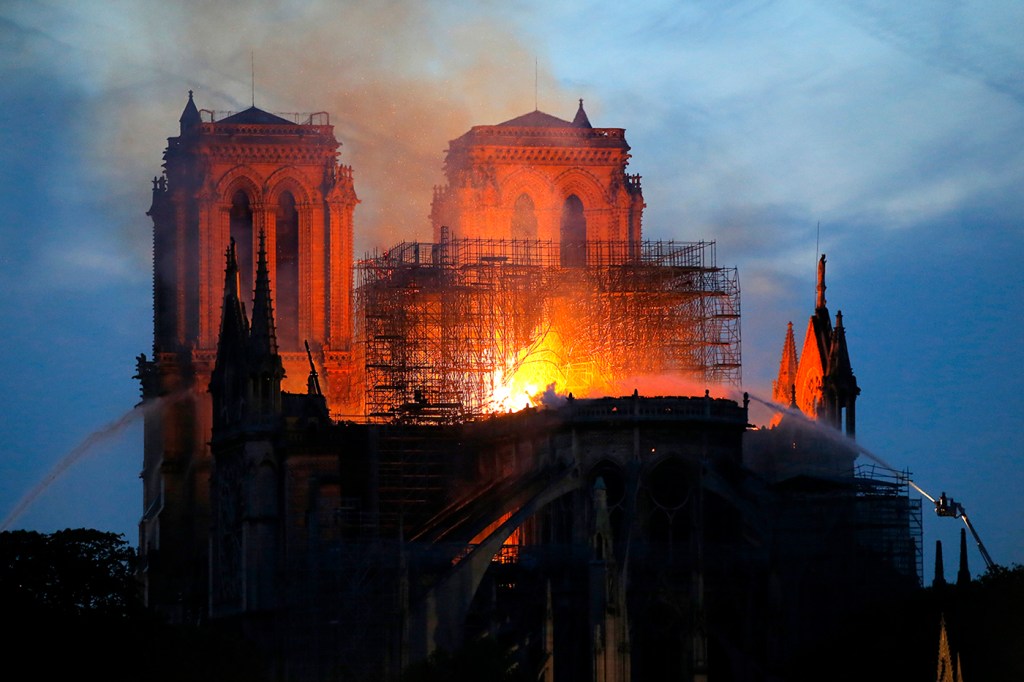Notre Dame’s gothic architectural features may be what saved it from total destruction from fire, Northeastern University professors say

Notre Dame cathedral in Paris is a “spectacular work of architecture,” and it may just be its iconic Gothic architectural features that saved it from total devastation after Monday’s extensive fire, according to architecture and engineering professors at Northeastern University. And, as the city begins to consider rebuilding, they say that some complex questions will arise.
The fire, which broke out Monday evening in Paris, destroyed the roof of the historic landmark, and toppled the cathedral’s spire. Firefighters contained the blaze before it destroyed Notre Dame’s quintessential bell towers. Police are investigating “involuntary destruction caused by fire.”
“The scale of the damage is much, much less than had been feared,” said Lucy Maulsby, an associate professor of architectural history at Northeastern. However, assessing all the damage wrought by the inferno will take days or weeks, she said.
Notre Dame cathedral is famous for architectural elements such as its flying buttresses, which are a form of structural support that became popular in the Gothic period of architecture.
Jerome Hajjar, who is CDM Smith Professor and chair of the civil and environmental engineering department at Northeastern, said he teaches students in his classes about Notre Dame’s flying buttresses as an example of innovation in steel structures.
Large fires destroy the structural integrity of buildings, forcing the weight of the building to be suddenly and unevenly redistributed, Hajjar said. More structural redundancy, though, means a building such as Notre Dame is well-positioned to withstand such unpredictable changes.
Hajjar said older structures were typically built with more redundancy than modern buildings. This means more load-bearing walls than we might consider necessary today, for example, he said.
These buttresses are designed to be strong enough to prevent the exterior walls of a building from being pushed outward by the force of the ceiling above them, while being thin and airy enough to allow for large windows in the building.
At Notre Dame, those windows are made, famously, of stained glass.
“I know I, and many of my colleagues, have been looking closely at images from the fire to see whether there’s any light visible inside the building,” Maulsby said Monday night. The presence of light would have meant the fire had dropped down into the “belly of the building,” where it would have begun melting the historic stained-glass windows.
“Once stained-glass windows are exposed to extreme heat, they’re gone completely,” she said.
By Tuesday, still little was known about the condition of the stained-glass windows, but in places where they appeared intact, heat, smoke, and water damage could affect the fragile relics, Maulsby said.
As French officials assess the damage from the blaze, a central question will emerge, Maulsby said: What do we do now?
“This building is a container of and a marker of so much history; not just French history, but Western history, and world history,” Maulsby said. “It’s also a spectacular work of architecture, and a building that, in many ways, serves to define Gothic architecture.”
And, she said, perhaps the fire presented a unique, if tragic, opportunity.
Notre Dame cathedral was built over a period of almost 200 years and has been heavily restored in the nearly 700 years since its completion. In that sense, Maulsby said, it has never been a building suspended in time; it has always changed and evolved.
“The building is a relic,” she said, “and there have been moments in history when it’s become the center of public and architectural discourse. I wonder whether this might be another of those moments, where the architecture has an opportunity to engage—in a very meaningful and provocative way—with the present.”
For media inquiries, please contact Shannon Nargi at s.nargi@northeastern.edu or 617-373-5718.





